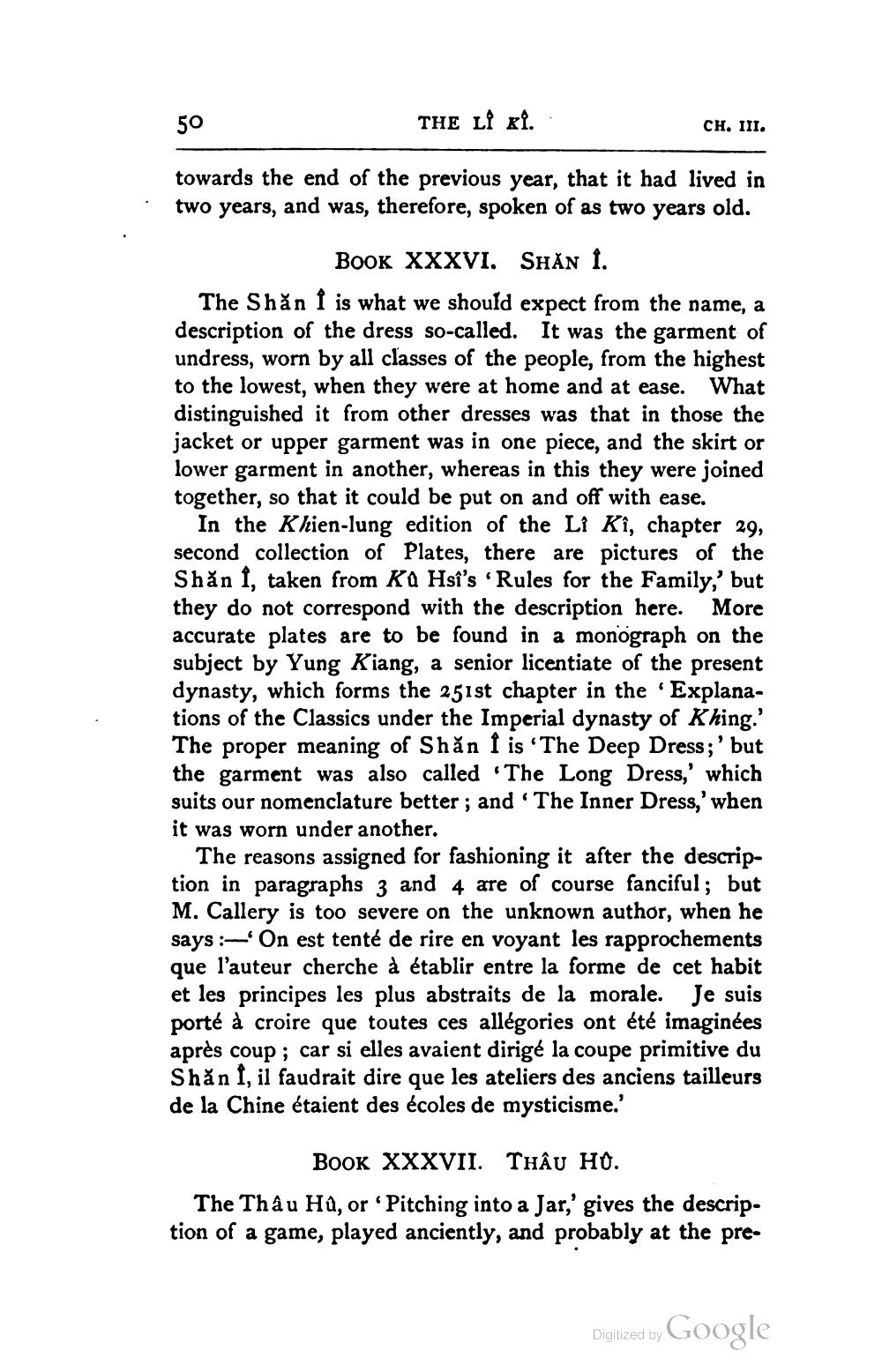________________
50
THE LÎ ki.
CH. III.
towards the end of the previous year, that it had lived in two years, and was, therefore, spoken of as two years old.
BOOK XXXVI. SHĂN Í. The Shăn 1 is what we should expect from the name, a description of the dress so-called. It was the garment of undress, worn by all classes of the people, from the highest to the lowest, when they were at home and at ease. What distinguished it from other dresses was that in those the jacket or upper garment was in one piece, and the skirt or lower garment in another, whereas in this they were joined together, so that it could be put on and off with ease.
In the Khien-lung edition of the Lî Kî, chapter 29, second collection of Plates, there are pictures of the Shăn i, taken from Ko Hsi's 'Rules for the Family,' but they do not correspond with the description here. More accurate plates are to be found in a monograph on the subject by Yung Kiang, a senior licentiate of the present dynasty, which forms the 251st chapter in the 'Explanations of the Classics under the Imperial dynasty of Khing.' The proper meaning of Shăn I is 'The Deep Dress; ' but the garment was also called “The Long Dress,' which suits our nomenclature better; and 'The Inner Dress,' when it was worn under another.
The reasons assigned for fashioning it after the description in paragraphs 3 and 4 are of course fanciful; but M. Callery is too severe on the unknown author, when he says : - On est tenté de rire en voyant les rapprochements que l'auteur cherche à établir entre la forme de cet habit et les principes les plus abstraits de la morale. Je suis porté à croire que toutes ces allégories ont été imaginées après coup; car si elles avaient dirigé la coupe primitive du Shăn I, il faudrait dire que les ateliers des anciens tailleurs de la Chine étaient des écoles de mysticisme.'
BOOK XXXVII. THÂU HỦ. The Thâu Ha, or · Pitching into a Jar,' gives the description of a game, played anciently, and probably at the pre
Digitized by Google




